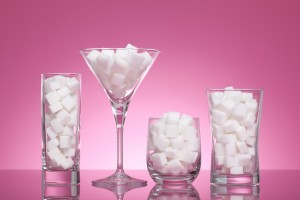Kaiser Permanente is sponsoring the launch of a three-part documentary film series, The Weight of the Nation for Kids, on HBO. As part of the organization’s continued efforts to promote a national conversation about obesity, Kaiser Permanente is sponsoring the launch of a three-part film series, The Weight of the Nation for Kids, which premieres May 7 on HBO. In addition to HBO, Kaiser Permanente is partnering with the Institute of Medicine, the Michael & Susan Dell Foundation, and the Centers for Disease Control and Prevention on this launch. Each film in the series spotlights youth who are taking the initiative to change the food and physical activity environments in their communities to combat the growing childhood obesity epidemic. Childhood obesity remains a pressing health issue, and there is an urgent and unmet need to inform communities about its risk factors. According to a recent national survey by the Institute of Medicine, at least 34 percent of American adults are overweight, and an additional 34 percent are obese. Among children, 32 percent meet the definition of being overweight or obese, with more than half of those in the obese category. A Groundbreaking Documentary The Weight of the Nation for Kids will help to increase national awareness and public engagement, inspiring kids to make healthy change happen in their own communities. The films contain critical and useful information we can apply to our own lives and share with our families, members, patients and communities. “Childhood obesity has reached epidemic proportions and has led to chronic conditions among our nation’s youth,” said Raymond J. Baxter, PhD, Kaiser Permanente’s senior vice president for Community Benefit, Research and Health Policy. “It’s clear that we must act now to improve the environments in which we live, work, learn and play.” The documentaries use scientific fact and compelling testimonials to illustrate the health consequences of obesity and excess weight in youth. They share inspiring stories of perseverance and drive, highlighting youth groups and individuals who have made real progress in improving the health of their schools and communities. The films include: The Great Cafeteria Takeover, which follows a group of kids in New Orleans who set out to make a difference in their community during the...
Read MoreThe Slim Down Full Food Program The Positive Choice Wellness Center is starting a new, low-cost, suppport option for wieght loss, March 2013. This new program will help people lose weight using a wholesome, fresh food diet combined with gentle exercise. The program includes weekly classes on nutrition/fitness education and support for behavior modification. The fee for the twelve-week Slim Down Full Food Program is $200. Call the Positive Choice Wellness Center to enroll. (858)...
Read MoreKaiser Permanente provides FREE Wellness Coaching by Phone; this personalized service assists you in reaching your lifestyle and wellness goals. Coaching is provided on five topics: Quit Tobacco; Get Active; Eat Healthy; Manage Weight; or Reduce Stress. Wellness Coaches partner with you to focus on healthy habits, create a customized plan, and schedule convenient telephone sessions. Wellness coaches use an evidence-based methodology to help boost your motivation and confidence to be successful. Must be a member of the Kaiser Permanente health Plan to participate. No referral is needed to access wellness coaching. Members can call the new phone number, (866) 862-4295, for an appointment. Wellness Coaching by Phone is available Monday through Friday, 6 a.m. to 7...
Read More
Sugar: A Sweet Deception
Get the PDF version of this article By Vicki Pepper, M.S., R.D., Kaiser Permanente, San Diego California When Emperor Darius invaded India in 510 B.C. he called it, “the reed which gives honey without bees.” The Crusaders called it sweet salt when they brought it to the European continent, and white gold is what the British called it in 1750 when it became the most valuable crop produced in all of Europe. Today we call it sugar and it is considered a basic food staple of the American diet. Sugar even rates a spot on the government food pyramids. Most Americans rarely go a day without consuming one form of sugar or another. We add it to just about everything—even ketchup, medicines, and baby food. The truth is that sugar is relatively new to the food chain. Unlike nuts, seeds, fruits, meats, and wild grains which have been found in the guts of primitive man and have been part of our consumption since our earliest history, sugar was discovered a mere 8,000 years ago and, until the last 40 years, people consumed very little of it. The harvesting and the making of sugar originated in New Guinea and then quickly spread to Polynesia, Indonesia, and eventually Northern India where it stayed until the seventh century. When Arabic peoples invaded India they quickly recognized sugar as valuable crop and carried the harvesting techniques to their conquered territories throughout the Arabian Peninsula where the technology stayed until the 11th century. It was the Crusaders who carried what they called sweet salt to Europe and later Columbus carried it across the seas to the Americas. Despite being of a substance of great desire, sugar was hard to come by, very expensive, and was something reserved for nobility and the very rich. So difficult were the conditions of harvesting it, that sugar is credited with the birth of African slavery as slaves were imported throughout the world to harvest sugar cane. It wasn’t until the 18th century that sugar was produced in enough quantities to become something the general public could afford and not until the early part of the 21st century that it was affordable enough to become a daily staple. In 1930,...
Read More
